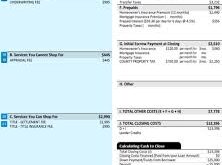Mortgage Insurance Premium: Everything You Need to Know. Mortgage insurance premium (MIP) is an essential cost for many homeowners, particularly those obtaining government-backed loans. Understanding MIP is crucial for managing your homeownership expenses and making informed financial decisions. This guide provides an in-depth look at mortgage insurance premiums, including their costs, benefits, and ways to minimize them.
What is a Mortgage Insurance Premium?
A mortgage insurance premium (MIP) is a fee paid by borrowers to protect lenders in case of loan default. This insurance is typically required for Federal Housing Administration (FHA) loans and helps make homeownership accessible to individuals who may not qualify for conventional loans.
How Mortgage Insurance Premium Works
When a borrower takes an FHA loan, they must pay MIP, which consists of an upfront payment and an annual premium. The upfront premium is a one-time payment, while the annual premium is divided into monthly installments added to the mortgage payment.
Types of Mortgage Insurance Premiums
- Upfront Mortgage Insurance Premium (UFMIP): This is a one-time fee, usually 1.75% of the loan amount, paid at closing.
- Annual Mortgage Insurance Premium (MIP): This is an ongoing charge, typically between 0.45% and 1.05% of the loan balance, paid monthly.
Who Needs to Pay Mortgage Insurance Premium?
MIP is mandatory for all FHA loan borrowers regardless of their credit score or down payment amount. Conventional loan borrowers may also need private mortgage insurance (PMI) if they put down less than 20%.
How Much Does Mortgage Insurance Premium Cost?
The cost of MIP depends on several factors:
- Loan Amount: Higher loan amounts result in higher MIP fees.
- Loan Term: Longer loan terms usually have higher MIP rates.
- Down Payment: A lower down payment results in a higher premium.
- Credit Score: While FHA loans are accessible to those with lower credit scores, MIP rates do not vary based on credit score.
How to Reduce or Eliminate Mortgage Insurance Premium
- Make a Larger Down Payment: Putting down at least 10% can reduce the length of time you pay MIP.
- Refinance to a Conventional Loan: Once you build at least 20% equity, refinancing into a conventional loan can eliminate MIP.
- Make Extra Mortgage Payments: Paying down your loan faster reduces the principal balance, leading to potential refinancing opportunities.
- Wait for Automatic Removal: Some FHA loans with a down payment of 10% or more will have MIP automatically removed after 11 years.
Benefits of Mortgage Insurance Premium
- Lower Down Payment Requirement: MIP allows borrowers to purchase a home with as little as 3.5% down.
- Increased Loan Accessibility: FHA loans provide opportunities for borrowers with lower credit scores.
- Lender Protection: MIP reduces lender risk, making loan approvals easier for borrowers.
Disadvantages of Mortgage Insurance Premium
- Additional Cost: MIP increases monthly mortgage expenses.
- Not Tax-Deductible: Unlike mortgage interest, MIP is not always deductible.
- Long-Term Payment Obligation: Some borrowers may need to pay MIP for the entire loan duration unless refinanced.
10 Tips for Managing Mortgage Insurance Premium
- Save for a Larger Down Payment to minimize MIP costs.
- Improve Your Credit Score to qualify for better loan terms.
- Compare Loan Options between FHA and conventional loans.
- Ask About MIP Removal Policies before finalizing your loan.
- Consider Refinancing once you have sufficient equity.
- Pay Off Your Loan Faster by making additional payments.
- Choose a Shorter Loan Term to lower overall MIP costs.
- Work With a Mortgage Broker to find the best loan options.
- Monitor Home Equity Growth to determine the best time to refinance.
- Understand Loan Terms to avoid surprises with MIP requirements.
10 FAQs About Mortgage Insurance Premium
1. What is the purpose of mortgage insurance premium?
MIP protects lenders in case borrowers default on their FHA loans.
2. Can I avoid paying MIP?
MIP is required for FHA loans, but borrowers can avoid it by choosing a conventional loan with a 20% down payment.
3. How long do I have to pay MIP?
For FHA loans with less than 10% down, MIP is required for the life of the loan. With 10% down or more, it lasts 11 years.
4. Is MIP tax-deductible?
MIP was tax-deductible in previous years, but eligibility depends on current tax laws.
5. What is the difference between MIP and PMI?
MIP applies to FHA loans, while PMI is for conventional loans with less than 20% down.
6. How is MIP calculated?
MIP is based on loan amount, term, and down payment percentage.
7. Does MIP apply to VA or USDA loans?
No, VA and USDA loans have their own funding fees but do not require MIP.
8. Can I pay off MIP early?
MIP is included in monthly payments, but you can eliminate it by refinancing.
9. Will refinancing remove MIP?
Yes, refinancing into a conventional loan with at least 20% equity removes MIP.
10. Is MIP required on all FHA loans?
Yes, all FHA loans require MIP regardless of down payment size.
Conclusion
Mortgage insurance premium is a necessary expense for FHA loan borrowers, ensuring lenders are protected while enabling homebuyers to access financing with a low down payment. While MIP adds to the cost of homeownership, understanding how it works and exploring ways to minimize or eliminate it can help borrowers save money in the long run.
For those considering an FHA loan, it’s essential to weigh the benefits of lower down payments against the added cost of MIP. By planning ahead and managing your loan wisely, you can make informed financial decisions that lead to long-term savings and homeownership success.
 mortgage.kbk.news
mortgage.kbk.news
